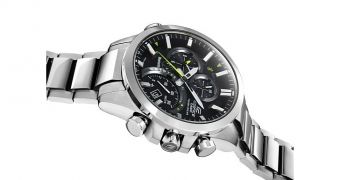The word “smartwatch” usually refers to a wearable wrist device which, in addition to telling time, can do some things that usually only smartphones or PCs can do. Casio has just presented the concept art for G-Shock.
The company seems to describe them as smartwatches that are somewhat smarter than the average smartwatches.
Stylistic repetitions aside, the G-Shock watches do have certain abilities that their kin don't usually exhibit.
Not that it's such a surprise that a company would go to greater than normal lengths to differentiate its devices from the competition. That's the core of good business after all.
So what does Casio do differently, you might ask? Nothing. Instead, it seems to have decided to add some things over the usual smartwatch spec sheet.
Let's take a look at the GPW-1000. It is a smartwatch that possesses integrated Radio Wave technology and GPS (global positioning system).
Add to that support for Sony's Global Navigation Satellite System and you can be sure that you'll never get totally lost, wherever you go.
Moreover, the GPW-1000 can calibrate to the correct time no matter where you go and when. So when you pass from one time zone to another, the timer on your wrist will update accordingly. All this at less power than other self-calibrating watches out there (which aren't exactly “smartwatch-smart,” so they don't count as competition in the grand scheme of things anyway).
The other watch concept that Casio devised is called Edifice EQB-500 and has Bluetooth 4.0 Low Power technology within.
It is the first analog watch to feature BT 4.0 Low Power actually, or will be once Casio actually releases it (no ETA has been provided, sadly).
The BT allows you to program timers via a smartphone app, but there seems to be no sign that the watch can display notifications of any sort.
That's a shame, and a big point against the watch, but maybe Casio will give it a lower price to make up for it, so not all is lost.
Then again, these watches are analog ones, which means they have genuine, physical hands and indicators for location and compass and the like. Considering that, it's not a shock that Casio wouldn't even try to include an OLED or LCD, although we wouldn't mind seeing a watch like those whose glass cover was actually a transparent screen of some sort.
Who knows, maybe Casio already has that in mind, or one of its competitors will introduce something in the future.

 14 DAY TRIAL //
14 DAY TRIAL //